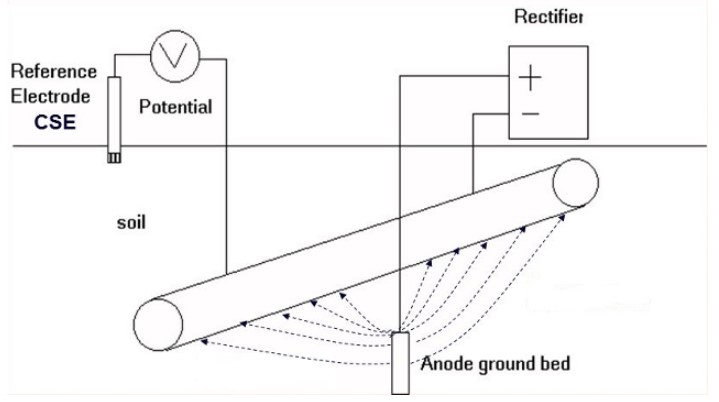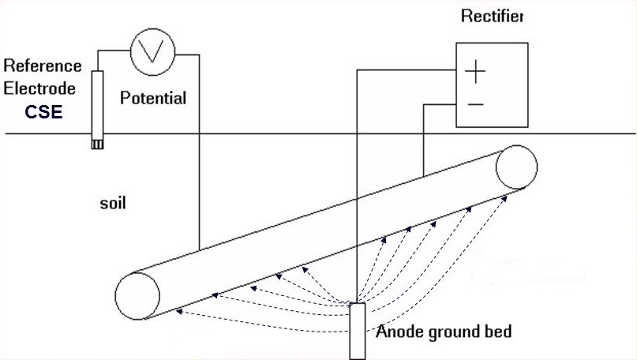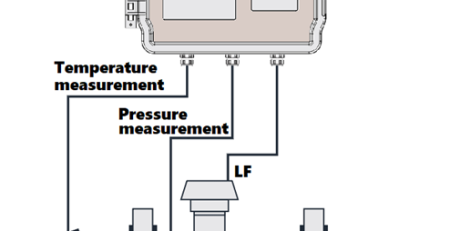The Basics of Cathodic Protection
Cathodic protection is a technique used to prevent corrosion in metal structures, such as pipelines, storage tanks, ships and other items that are susceptible to oxidation. It works by applying a direct current to the metal surface, which prevents the electrochemical reaction which causes to corrosion on the metal structure.
One of the main benefits of cathodic protection is that it is a cost-effective way to prevent corrosion. It is also a relatively simple process, and once it is installed, it requires minimal maintenance. In addition, cathodic protection can be easily retrofitted to existing structures, making it an ideal solution for extending the lifespan of older infrastructure.
There are several measurement techniques that are used to assess the effectiveness of cathodic protection systems. One commonly used method is called the impressed current system, which involves applying a direct current to the metal surface using an external power source. Other techniques include the use of galvanic anodes, which works by attracting corrosive agents in the surrounding environment to itself, rather than to the metal it is protecting.
Application of Cathodic Protection Systems
Cathodic protection systems are used to protect buried pipelines from corrosion and ensure their safe operation, even in challenging soil conditions. These systems can be applied to pipelines that have been coated or left bare, and can use either galvanic anodes or impressed current to provide protection. The choice between these methods depends on various factors, such as the amount of current needed, the soil’s resistivity, and the size of the area being protected. It is important to consider the use of cathodic protection for pipelines that are exposed to corrosive environments.
Cathodic Protection Measurement Techniques
The Cathodic Protection device uses a coupon when measuring. Remote monitoring devices for proper management of coupons Equipped with an internal switch to check the connection between coupons and pipe. It can make measurements such as Eon, Eoff and AC-DC current density according to the coupon status in a healthy way. Cathodic protection devices also allow us to control the coupon status using its switch. PWATCH-2 devices developed by RMFTEK company provide an improved performance and measurement frequency with adjustable measurement frequency feature.

1- Cathodic Protection Potential Measurement (On Potential)
Cathodic protection potential measurement is a technique used to evaluate the effectiveness of a cathodic protection system, which is used to protect a specific structure from corrosion. The effectiveness is determined by comparing the measured potential with certain standards.
On potential measurements, which are taken while the protective current is active, are commonly used for monitoring cathodic protection, especially in situations where d.c and a.c stray currents are present. In these cases, on potentials should be recorded over a period of time to accurately reflect the interference level and potential variation. However, the values obtained (on potentials Eon) include various unknown IR drops that can change with time and the position of the reference electrode, and do not accurately represent the potential at the phase boundary.
2- Off Potential Measurements (Instant Off Potential)
The instantaneous off potential technique can be used to eliminate the influence of IR drops on potential measurements. This technique involves measuring the potential against a reference electrode within one second after the protective current is turned off, and the values obtained are known as off potentials, or Eoff.
For the steel/soil system, the Eoff potential measured in this way is usually sufficiently accurate. However, some metal/electrolyte systems, such as lead/soil, or newly protected steel structures that are bare, may experience rapid depolarization, requiring a shorter time between current disconnection and measurement.
Eoff potential measurements on a pipeline are typically influenced by the filter characteristics of the voltmeter and the time elapsed between current disconnection and the measurement being taken.
Potential Measurements for Pipelines with Coupons
Coupons are small pieces of metal that are used to simulate coating defects in pipelines and to accurately measure Eoff potentials. In order to be representative of actual pipeline conditions, coupons should be installed in the same soil or backfill as the pipeline and should consider factors such as size, shape, coating thickness, and the angle between the coating and simulated defect.
AC voltage on a pipeline can cause corrosion under normal operating conditions of AC sources such as power lines or railway lines. This AC voltage may be induced or flowed onto the pipeline from these sources. Coupons can be installed permanently or temporarily on the pipeline to evaluate the risk of AC corrosion, allowing for accurate measurement and analysis.

3- Current Measurements for Current Density Calculation
The AC and DC current density on a coating defect plays a crucial role in determining both the level of cathodic protection and the AC corrosion process. Therefore, it is a more reliable parameter for evaluating the likelihood of AC corrosion than on-potentials or AC voltage.
Coupons can be used to estimate the current density, but it is important to consider the limitations of this technique. When calculating the current density based on the metallic coupon surface area and the current measured on a coupon, the current is averaged over the entire coupon surface.
Coupon currents (AC or DC) can be measured using a voltage drop across a series resistor. For both AC and DC current measurements, the value of the series resistor should be low enough to avoid significant disturbance of the system.
As a result,
To fully understand the protection status of a cathodically protected structure, it is important to measure the following parameters:
-DC/AC on potential
-IR-free off potential
-DC/AC current density
-Native potential
The PWATCH-2 device is capable of calculating all of these parameters and is designed for remote monitoring of cathodic protection systems in distribution and transmission utilities. It is a battery-powered, high-performance, self-contained, durable device that is specially designed for data acquisition and data logging. For more information about this device, you can refer to the provided link.



Leave a Reply